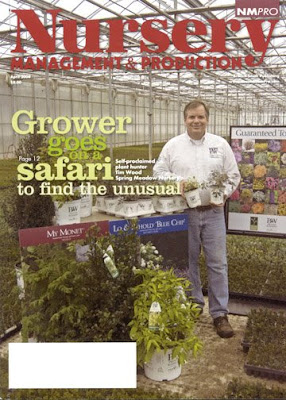
Plant Exploration: Past, Present, and Future.
If you are in the area please join us as we take a closer look plant hunting.
Presentations begin at 8:45 am. Registration fee is $60 for Fernwood members and $75 for non-members and includes all sessions, breaks, and lunch. The symposium fulfills 2 hours of Michigan Master Gardener continuing education credits. Please call (269) 695-6491 to register or for more information.
Plant Exploration and Early Plant Explorers of China
Ed Hedborn, The Morton Arboretum, Lisle, Illinois
Ed Hedborn has been the Plant Records Manager and Plant Recorder for The Morton Arboretum for the past 30 years. He is responsible for life-history information about all plants in the Arboretum's living plant collections from 1922 to the present. He also teaches classes for the Arboretum's education program and the Associated Colleges of the Chicago Area. Ed speaks about the earliest recorded plant exploration and the classic period of Chinese plant exploration of the late 1800s and early 1900s. He covers some of the renowned plant explorers of that time and offers some insight as to why we explore for plants.
Plants For Today
Tim Wood, "The Plant Hunter" from Spring Meadow Nursery
Tim Wood is the Product Development Manager for Spring Meadow Nursery in Grand Haven, Michigan. He has taught at Michigan State University, co-hosted a garden radio talk show, and written three books. Tim is a member of the Royal Horticultural Society and was named the Michigan Nurseryman of the Year in 2001. Tim discusses recent explorations as well as what we may expect in the future of plant exploration.
In Search of New Plants: Recent Discoveries
Galen Gates, Chicago Botanic Garden, Glencoe, Illinois
Galen Gates is Director of Plant Collections for the Chicago Botanic Garden, and is responsible for the management and development of the Garden's collection of 2.3 million plants. He is Chair of the Plant Collecting Collaborative, a consortium of six public gardens that searches the world for new plants. He has planned and led several foreign plant collecting expeditions, further enriching the botanical diversity available in the U.S. Galen tells of recent discoveries from his trips to China, Russia, and the Republic of Georgia. He also talks about the cultures of the countries where he does his research.
Plants in Print: The Age of Botanical Discovery
Edward J. Valauskas, Lenhardt Library, Chicago Botanic Garden, Glencoe, Illinois
Edward is the Curator of Rare Books at the Lenhardt Library and an instructor at the Graduate
School of Library and Information Science at Dominican University in River Forest, Illinois.
Edward addresses how five hundred years of rare books, journals, and manuscripts reveals a complex and detailed history of botanical research around the world. Solving problems of taxonomy, evolution, and ecology, botanical explorers in their records provide details on the floral world around them. These works in turn took advantage of the latest developments in
printing and illustration, with the best artists of their times working to illustrate plants as naturally as possible.
The Story Behind That Plant: Fernwood's Plant Collection
Steven Bornell and Ann Desenberg, Fernwood
Since the 1940s Fernwood's founder, Kay Boydston, and subsequent garden staff have searched near and far for hardy ferns and many other interesting plants for Fernwood's collections. Steven Bornell, manager of Fernwood's plant collections, along with Ann Desenberg, Fernwood's plant recorder, share their "picture album" along with some interesting facts and anecdotes behind some of the noteworthy plants on the property.
Weather permitting, an optional short walk at the end of the program is offered to see some of the plants discussed earlier.









